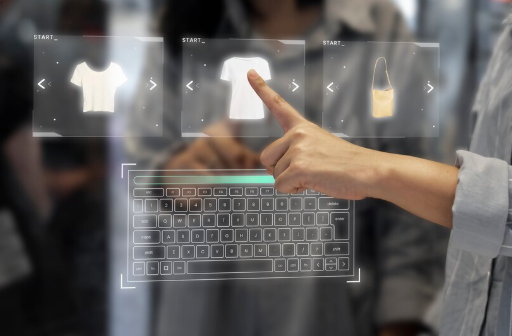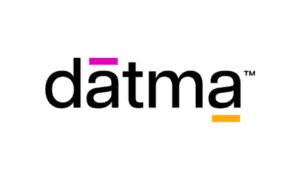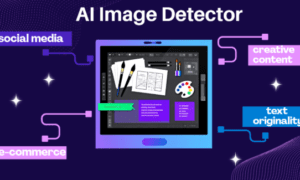Running an online store feels like a constant battle for customer attention. You’ve got great products and competitive prices, but somehow visitors just scroll past without stopping. Sound familiar?
Here’s something that might surprise you – some of the most successful online stores use a simple trick that costs practically nothing but can transform how customers interact with their products. They use smart product labels.
Think about it. When you walk into a physical store, you see the bright “SALE” stickers, “NEW” tags, or “STAFF PICK” badges. These work online too, maybe even better.
Why Visual Cues Actually Work
Picture this: A customer lands on your category page with dozens of products. They’re scanning quickly, maybe on their phone during a coffee break. Without clear visual signals, everything looks the same. But add a “Best Seller” badge to your top-performing item, and suddenly it stands out from the crowd.
This isn’t just theory. Visual elements help shoppers make faster decisions. When people see labels like “Limited Time” or “Back in Stock,” it triggers something in their brain that says, “pay attention to this”.
The Essential Label Types That Actually Drive Sales
Time-Based Labels That Create Urgency
Nothing motivates a purchase quite like knowing an offer won’t last forever. Labels that display for specific time ranges work incredibly well during flash sales or seasonal promotions. You can set them to appear automatically when your sale starts and disappear when it ends.
Imagine running a weekend promotion. Instead of manually updating every product page, your labels can show “Weekend Special” only during those specific days. Once Monday hits, they vanish automatically.
Smart Category and Product Filtering
Here’s where things get interesting. You can create labels that automatically appear based on what products they’re attached to. Got a new shipment of winter coats? Set up a “New Arrival” label that only shows on products in your outerwear category.
This filtering works across your entire store structure. Electronics get tech-focused labels, clothing gets fashion-focused labels, and seasonal items get time-sensitive badges. Everything stays organized without you having to manage each product individually.
Multiple Labels on Single Products
Sometimes one label isn’t enough to tell the whole story. A product might be both on sale AND a customer favorite. Modern labeling systems let you show multiple labels on the same item without cluttering the design.
Think of a popular item that’s also discounted. You could display both “Customer Favorite” and “20% Off” labels. The social proof element combines with the price incentive to create a compelling reason to buy.
Customer Group Targeting
Different customers care about different things. Your regular customers might respond to “Member Exclusive” labels, while first-time visitors might be more interested in “Free Shipping” badges.
Advanced labeling systems can show different labels to different customer groups. VIP customers see special discount labels, while new visitors see welcome offers. It’s like having a personalized shopping experience without the complexity.
Technical Features That Make the Difference
Flexible Positioning Options
Labels need to grab attention without ruining your product photos. The best systems let you position labels anywhere on the product image – top corners, bottom edges, or even floating in specific spots.
You might put sale labels in the top-right corner where people naturally look first, while “New” badges could go in the top-left. The key is consistency across your store so customers know where to look.
Product Attribute Integration
This is where automation becomes powerful. Labels can appear automatically based on product attributes like price, stock level or custom fields you’ve set up.
For example, products under a certain price point could automatically get “Budget-Friendly” labels. Items with low stock could show “Almost Gone” warnings. You set the rules once, and the system handles everything else.
Priority Settings for Label Management
When multiple labels could apply to the same product, you need a system that shows the most important one first. Priority settings let you decide what matters most.
During a big sale, promotional labels might take priority over regular “Featured” badges. When the sale ends, the system automatically falls back to the standard labels.
Easy Duplication and Management
Managing hundreds of products becomes much easier when you can copy successful label setups. If you’ve created the perfect “Summer Sale” label, you can duplicate it and adjust the details for your “Fall Clearance” without starting from scratch.
This saves hours of work, especially when running multiple campaigns throughout the year.
Practical Implementation Without the Headaches
GraphQL Compatibility for Modern Stores
If your store uses modern development approaches or headless commerce setups, your labeling system needs to keep up. Compatible product labels ensure your visual elements work seamlessly with contemporary store architectures.
This technical compatibility means your labels will continue working as your store evolves and adopts new technologies.
Configurable Product Support
Selling items with multiple variations like size or color options? Your labeling system should handle configurable products smoothly. When someone selects a red shirt from your blue shirt product page, the appropriate labels should update accordingly.
This prevents confusion and ensures customers always see relevant information for their specific product choice.
Wishlist Integration
Customers often save items for later purchase. When they return to their wishlist, they should still see the same labels that caught their attention initially. Proper wishlist integration maintains this continuity.
If an item was labeled “Limited Edition” when they saved it, that label should still appear in their wishlist, maintaining the original appeal.
Design Principles That Actually Work
Keep It Simple
The biggest mistake stores make is going overboard with labels. Every product doesn’t need a badge. Use labels strategically to highlight genuinely special items or important information.
A cluttered product page with labels everywhere creates decision paralysis. Customers don’t know what to focus on, so they focus on nothing.
Match Your Brand Style
Labels should feel like part of your store design, not an afterthought. If your brand is minimal, your labels should be simple. If you’re more bold and colourful, your labels can be too.
Consistency is key. When everything looks intentional and coordinated, customers feel more confident to buy.
Mobile-First Thinking
More people shop on phones than on computers now. Your labels need to look good and be readable on small screens. What works on a desktop might be too small or poorly positioned on mobile.
Test your labels on actual devices, not just browser developer tools. Real-world testing reveals issues you might miss otherwise.
Common Mistakes to Avoid
Overdoing the Urgency
Not everything can be urgent or on sale. If every product has a “Limited Time” label, none of them feel special. Use urgency sparingly for maximum impact.
Forgetting About Performance
Labels shouldn’t slow down your store. Optimize images, use efficient code, and test loading times regularly. A fast store with simple labels beats a slow store with fancy graphics every time.
Setting and Forgetting
Labels need maintenance. Outdated “New Arrival” badges on months-old products look unprofessional. Regular audits ensure your labels stay current and relevant.
Measuring What Matters
Track the Basics
Monitor which products with labels get more clicks, longer viewing times, and higher conversion rates than unlabeled items. This data guides future labeling decisions.
A/B Testing
Try different label styles, positions, and messages with similar products. The results might surprise you. Sometimes a simple “Popular” label outperforms a flashy “Best Seller” badge.
Revenue Impact
Connect your labeling efforts to actual sales numbers. Which label types generate the most revenue? Which campaigns drive the biggest increases in average order value?
The Future of Product Labeling
Personalization at Scale
Big systems are now showing different labels to different customers based on browsing history, purchase patterns, and preferences. This level of personalization was once only for big retailers, but now it’s for smaller stores too.
Interactive Elements
Static labels are being replaced by interactive ones. Hover effects, expandable information panels, and animated elements create more engaging product experiences.
Integration with Marketing Automation
Labels are connecting with email marketing, social media campaigns, and other marketing tools. A customer who clicks on a “New Arrival” label might get emails about similar new products.
Making It Happen in Your Store
Start Small
Don’t try to implement every labeling feature at once. Begin with basic promotional labels for your current sale items. Learn what works, then expand gradually.
Focus on Your Best Sellers
If you’re not sure where to start, add labels to your best-selling products first. These products already convert well, so labels can make them convert even better while you learn the system.
Listen to Customer Feedback
Listen to customer behavior and feedback. If customers are confused by certain labels or ignore others entirely, adjust your approach.
Plan for Seasons and Events
Set up labeling schedules around your big sales events, holidays, and product launches. Having labels ready to go reduces last-minute stress and ensures consistent execution.
The Bottom Line
Product labels might seem like a small thing, but small things make the biggest difference in e-commerce. They guide customer attention, communicate value, and help customers make purchasing decisions faster.
The key is to implement labels thoughtfully, not randomly. Focus on real value for customers, not just making everything look “special”. When done right, smart product labeling becomes an invisible sales assistant that works 24/7 to boost your store’s performance.
Your customers are already scanning your products, looking for reasons to buy. Labels simply make those reasons impossible to miss.





























